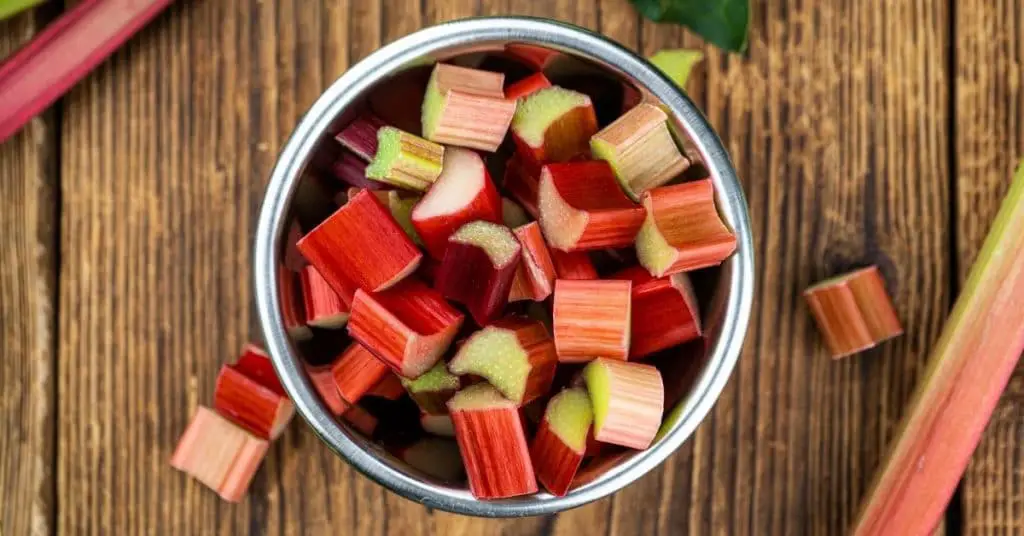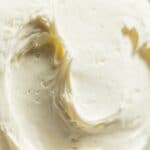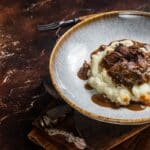In short, yes, you can freeze rhubarb to extend its shelf life. Remove the poisonous leaves, use and freeze the stems, and protect them from air and moisture to maintain quality.
Known as the pink, tart, and tangy springtime vegetable, rhubarb stalks are used to make compote, cakes, pie, or rhubarb sauce.
Yes, although it is technically a vegetable, rhubarb is used largely in desserts. But, it can also be incorporated deliciously into savory dishes and salads.
Just because season to grow and harvest rhubarb is fairly short doesn’t mean you can’t enjoy it year-round.
Rhubarb freezes well and that means you can make full use of rhubarb season, purchase in bulk, and freeze away to enjoy this unique vegetable regardless of the time of year.
Make sure you follow the below helpful tips and guidelines carefully when freezing rhubarb as there are some important factors to consider when handling this vegetable. Here is your full guide to freezing rhubarb.
Can Rhubarb Be Frozen?
Yes, you can freeze rhubarb to prolong its shelf life for future use. Rhubarb can be frozen raw or cooked and preserved for use long after harvesting season has ended. It is important to remove the poisonous leaves of rhubarb and only use and freeze the stems.
Always choose fresh, firm rhubarb stalks for freezing and make sure they are well-protected from contact with air and moisture in the freezer to prevent freezer burn and quality deterioration.
How To Freeze Rhubarb
Step 1: Trim
Trim the bottom split or damaged ends of the raw rhubarb plant and remove all the poisonous leaves. Throw the leaves away and don’t consider feeding them to your pets.
Step 2: Wash
Wash the rhubarb stalks in cold water making sure to remove all the dirt. Dry the stalks and cut them into 1-inch size pieces.
Step 3: Optional – Blanch
Although you do not need to blanch rhubarb before freezing if you plan to use it within three months, it is recommended for longer storage periods. Blanching it will preserve the vibrant color much more effectively.
To blanch the rhubarb, throw the 1-inch pieces into a large pot of already boiling water. Let it boil for one minute only and immediately drain it and submerge the rhubarb pieces into a bowl of ice water to stop the cooking process. The rhubarb should still be firm.
Once cooled, drain the rhubarb and dry it to remove any excess moisture. Excess moisture will result in the formation of large ice crystals on freezing and ruin the quality of the vegetables.
Step 4: Flash Freeze
Line a large baking sheet with parchment paper. Spread the chopped rhubarb pieces out in a single layer on the baking sheet. Place it in the freezer for a few hours or just until the pieces are frozen.
The short open freeze or flash freeze process prevents the rhubarb from sticking together and freezing in one large clump. This allows you to remove just the amount you need at a time and keep the rest frozen.
Step 5: Pack
Once frozen, remove the tray from the freezer and pack the rhubarb into resealable freezer bags or an airtight container. Press out as much air as possible before sealing the bag. Label the container or freezer bag with the date and contents and place it back in the freezer.
How To Thaw Frozen Rhubarb
Rhubarb does not have to be thawed before cooking. Remove it from the freezer and add it straight to the pot or batter for cooking your favorite rhubarb recipes.
If you find that the rhubarb has formed some ice crystals on freezing which may result in a more watery product once heated, first cook the rhubarb down with sugar and add some cornstarch to thicken it before using it in a pie or as a filling. This will ensure that you do not ruin the consistency of the dish.
Types of Rhubarb
Rhubarb is generally known for its long red stalks, but it also comes in green and speckled pink varieties. Firm, crisp stalks grow between 8 and 15 inches long with green leaves.
It is important to note that only the stalks are edible and rhubarb leaves are poisonous and should therefore be discarded.
Among the many different types of rhubarb, the main difference is in the thickness or the stalk and vibrancy of the stem color. Red stalks are, however, not necessarily sweeter than lighter stalks as the color and sweetness of these vegetables have little bearing on one another.
Due to its tart flavor, rhubarb is always cooked down with sugar and although it can accompany savory dishes pickled or as a sauce, it is typically used for desserts, jam, in pies, cakes, and turned into a syrup.
FAQs
Conclusion
You can use frozen rhubarb in the same way that you would use fresh rhubarb to make jams, compote, cobblers, pies, muffins, and syrup.
You do not need to peel rhubarb, however, if you find your rhubarb is rather stringy or woody, you may want to peel it before cooking for a better, smoother result.
This tart vegetable generally needs a lot of sugar added to it when cooking and is great when combined with apples or strawberries.
No need to wait for next spring to come around to enjoy your own rhubarb harvest again. Get freezing and you’ll have enough to last you all the way through autumn and winter.
Up next: how to freeze celery
*image by HandmadePicture/depositphotos









